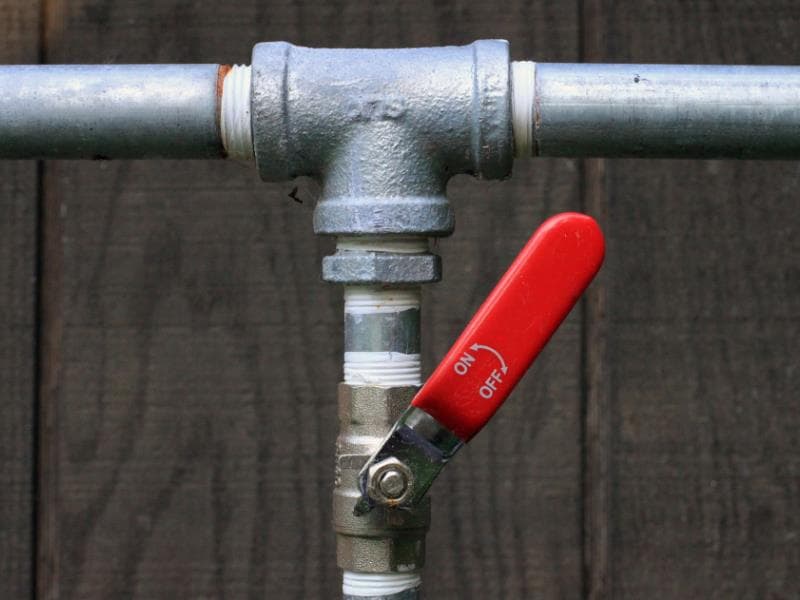What Is Galvanized Plumbing, and How Does It Work?
Learn about galvanized plumbing, its history, benefits, potential issues, and modern alternatives for your home's water system.

If you've ever wondered about the pipes running through your home, galvanized plumbing might be part of your system. Many homes built before the 1960s still have these zinc-coated steel pipes. Alton plumbing companies often encounter these older systems during inspections and renovations. Understanding how galvanized plumbing functions helps you make informed decisions about your home's water system. This guide explains what galvanized plumbing is, how it operates, and what you need to know about maintaining or replacing it.
History of Galvanized Plumbing
Galvanized plumbing became a go-to choice for water systems in homes and businesses during the early 1900s. These pipes are made from steel and coated with zinc to stop rust and corrosion. The galvanization process involves dipping steel pipes into molten zinc, creating a protective barrier that extends the pipes' lifespan. People loved galvanized plumbing because it was tough and could handle harsh conditions. Over the years, however, problems began to emerge, with mineral buildup and slower water flow becoming common issues. These problems led people to switch to newer materials, such as copper and plastic pipes.
Galvanization Process Explained
Understanding the galvanization process shows you why these pipes last so long. The process coats steel pipes with zinc to prevent corrosion and extend their lifespan. Workers first thoroughly clean the steel surface to remove any contaminants that might interfere with the zinc bonding. Then they dip the clean pipes into a bath of molten zinc. A chemical reaction happens at this stage, forming a zinc-steel alloy layer on the pipe's surface. This zinc coating acts like a shield between the steel and the environment, blocking rust and corrosion. Galvanized pipes can handle tough conditions, which explains why they're still found in many older homes.
Benefits of Using Galvanized Plumbing
Galvanized plumbing has offered several advantages that have made it a popular choice for decades. These pipes are incredibly durable and typically last up to 50 years when properly maintained. They handle both indoor and outdoor conditions well, resisting damage from weather and environmental factors. The cost-effectiveness stands out because they require minimal maintenance and rarely need early replacement, saving you money on repairs over time. Installation is straightforward, which keeps labor costs reasonable during the setup process. These pipes also resist fire, providing an added layer of safety for your home. The combination of strength, longevity, affordability, ease of installation, and fire resistance makes galvanized plumbing a practical choice for many situations.
How Galvanized Plumbing Prevents Corrosion
Galvanized pipes resist corrosion through a protective zinc layer on their surface. The galvanization process applies this thin zinc coating to steel pipes. Zinc naturally resists corrosion, making it an ideal material for protecting pipes and other metal components. When pipes are exposed to moisture or other damaging elements, the zinc coating corrodes first, sacrificing itself to protect the steel underneath. This sacrificial process keeps the steel pipes from rusting or deteriorating over time. Galvanized plumbing creates a durable piping system that withstands harsh conditions without corroding.
Common Issues With Galvanized Pipes
Problems with galvanized pipes typically begin when the protective zinc coating on the pipes ages and wears away, exposing the underlying metal. Once the zinc coating thins, the steel underneath gets exposed to corrosive elements. This exposure creates rust and corrosion inside the pipes. As corrosion worsens, rust deposits accumulate, reducing water flow and potentially leading to leaks or pipe bursts. The corrosion can also discolor your water and give it a metallic taste. Resolving these issues often requires replacing pipes, especially in older homes where galvanized plumbing is prevalent. Regular inspections and maintenance help you spot and prevent these problems before they get serious.
Modern Alternatives to Galvanized Plumbing
When upgrading your home's water system, you have several better options than old galvanized pipes. Here are the top modern alternatives:
PEX (Cross-linked Polyethylene): Flexible, tough, and resistant to corrosion, PEX pipes are simple to install and won't break your budget.
Copper Pipes: Renowned for their durability, copper pipes resist corrosion and deliver excellent water flow.
CPVC (Chlorinated Polyvinyl Chloride): CPVC pipes are cost-effective, easy to install, and resistant to chemical reactions, making them suitable for both hot and cold water applications.
Stainless Steel Pipes: Extremely durable and corrosion-resistant, stainless steel pipes are ideal for high-pressure water systems and can last for many years.
Related Topics: